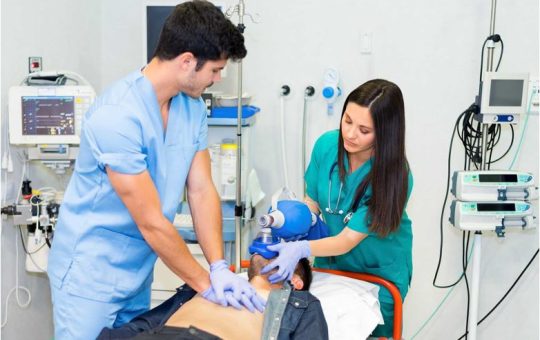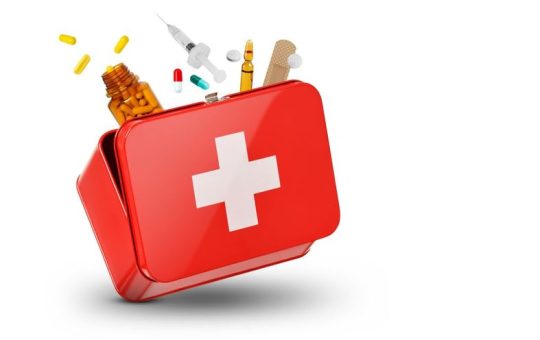
First Aid Level-2
Course Overview
The First Aid Level 2 course builds upon the foundational skills covered in Level 1, offering more advanced techniques and in-depth knowledge to handle complex emergencies. Designed for individuals in workplaces, community settings, or industries with a higher risk of injuries, this course provides the confidence and competence to manage various medical emergencies effectively. Participants will engage in hands-on training and scenarios that mirror real-life situations, ensuring practical readiness.
Benefits
- Advanced Skills: Gain deeper knowledge of first aid procedures for a wider range of medical and trauma situations.
- Preparedness for Complex Scenarios: Handle emergencies like fractures, severe burns, or cardiac arrest with greater confidence.
- Workplace Compliance: Fulfill legal requirements for advanced first aiders in high-risk industries.
- Practical Experience: Engage in immersive, hands-on practice to ensure skill retention.
- Career Advancement: Qualify for roles requiring advanced first aid expertise or as a first aid trainer.
Learning Outcomes
Upon completion of the course, participants will:
- Perform advanced first aid procedures, including administering CPR and using an automated external defibrillator (AED).
- Manage complex injuries such as severe bleeding, fractures, and spinal injuries.
- Recognize and respond to critical medical conditions, including heart attacks, strokes, and seizures.
- Stabilize casualties with life-threatening injuries until professional help arrives.
- Assess and manage multiple casualties in emergency scenarios.
- Use advanced first aid equipment effectively and appropriately.
Study Units
Unit 1: First Aid Refresher
- Recap of Level 1 principles and techniques.
- Importance of scene safety and risk assessment.
- Reviewing the roles and responsibilities of an advanced first aider.
Unit 2: Advanced Cardiopulmonary Resuscitation (CPR)
- Performing CPR with an AED.
- Managing cases of cardiac arrest and respiratory failure.
- Practical application on adults, children, and infants.
Unit 3: Managing Severe Injuries
- Treating severe bleeding, amputations, and shock.
- Managing burns, scalds, and electrical injuries.
- Splinting fractures and stabilizing spinal injuries.
Unit 4: Responding to Medical Conditions
- Identifying symptoms and providing first aid for heart attacks, strokes, and diabetic emergencies.
- Handling asthma attacks, seizures, and allergic reactions.
- Responding to poisoning or overdoses.
Unit 5: Multiple Casualty Management
- Triage techniques in mass casualty incidents.
- Prioritizing care for multiple victims.
- Coordinating with emergency services.
Unit 6: Practical Assessment
- Role-playing real-life emergency scenarios.
- Hands-on practice with advanced first aid equipment.
- Evaluating performance under simulated conditions.
Career Progression
The First Aid Level 2 course opens doors to advanced roles and certifications, such as:
- Occupational First Aider: Provide dedicated first aid in workplace environments.
- First Aid Level 3: Further specialize in managing high-risk and critical emergencies.
- Emergency Medical Technician (EMT): Begin a career in pre-hospital care and emergency medical services.
- First Aid Trainer: Teach Level 1 and 2 courses to others.
- Roles in Safety and Risk Management: Contribute to workplace health and safety as a qualified first aid professional.
This course is highly recommended for individuals seeking to advance their knowledge, improve their preparedness, and enhance workplace safety.
Our assessment process is designed to ensure every learner achieves the required level of knowledge, skills, and understanding outlined in each course unit.
Purpose of Assessment
Assessment helps measure how well a learner has met the learning outcomes. It ensures consistency, quality, and fairness across all learners.
What Learners Need to Do
Learners must provide clear evidence that shows they have met all the learning outcomes and assessment criteria for each unit. This evidence can take different forms depending on the course and type of learning.
Types of Acceptable Evidence
Assignments, reports, or projects
Worksheets or written tasks
Portfolios of practical work
Answers to oral or written questions
Test or exam papers
Understanding the Structure
Learning outcomes explain what learners should know, understand, or be able to do.
Assessment criteria set the standard learners must meet to achieve each learning outcome.
Assessment Guidelines
All assessment must be authentic, current, and relevant to the unit.
Evidence must match each assessment criterion clearly.
Plagiarism or copied work is not accepted.
All learners must complete assessments within the given timelines.
Where applicable, assessments may be reviewed or verified by internal or external quality assurers.
Full learning outcomes and assessment criteria for each qualification are available from page 8 of the course handbook.
Top Courses
No results found.
Related Courses
Let's Get in touch
Deleting Course Review
Course Access
This course is password protected. To access it please enter your password below:



